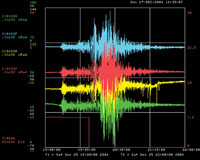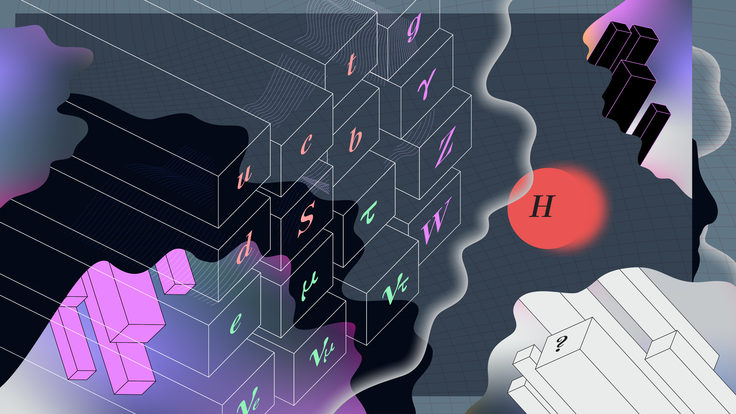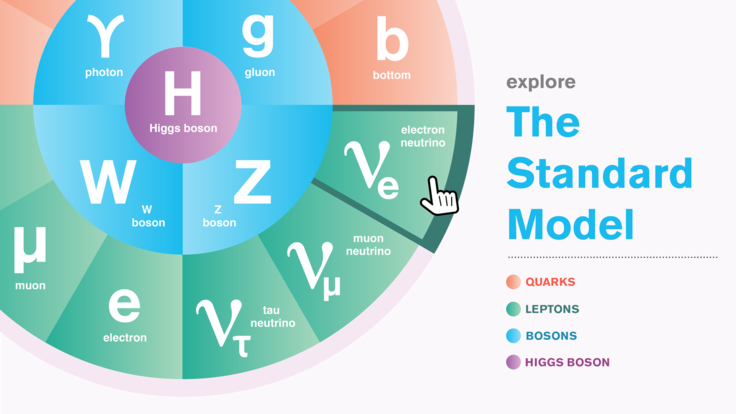 |
| Tevatron recordings of the magnitude 9.1 quake near Sumatra that set off tsunamis and killed 228,000 people in December 2004. Image courtesy of Fermilab |
Was that a quake? Ask the Tevatron
Long after the hard shaking stops, an earthquake's seismic waves reverberate around the world, imperceptibly rocking the ground. As one seismologist puts it, a great earthquake causes every grain of sand on Earth to dance.
And big particle accelerators dance along.
Fermilab's Duane Plant found this out one Sunday afternoon when he logged on to his home computer to check the performance of the Tevatron, an underground ring four miles in diameter where subatomic particles collide. It was November 3rd, 2002.
He noticed the particle beams had suddenly stopped circulating. Then, on a TV playing in the background, a newscaster announced that a 7.9-magnitude earthquake had just struck thousands of miles away in south-central Alaska.
“And it slowly seeps into his brain,” recalls a colleague, Todd Johnson, “and he called me up and said, ‘Is this crazy?'”
Johnson and Plant, who has since retired, checked sensors installed on a dozen of the Tevatron's magnets to detect slow ground movements that can throw the beam off kilter. “The readings for these tiltmeters were all over the place,” Johnson says, “and just when they peaked is when the beam went away.”
The two accelerator operations specialists figured out when the first surface waves from the earthquake would have arrived at the collider in Illinois. “The timing was perfect,” Johnson says.
The quake watch was on.
Since then the Tevatron has recorded about 20 more earthquakes from all over the globe, including this year's deadly shocks in Sumatra and Samoa. Only one, a moderate local quake on June 28, 2004, shut the collider down. The tiltmeter recordings look a lot like seismogram squiggles—which makes sense, says US Geological Survey seismologist William Ellsworth, because these sensors are essentially low-resolution seismometers.
Seismic waves are a problem for other large structures, too, including LIGO, the Laser Interferometer Gravitational-Wave Observatory, which operates enormous detectors in Louisiana and Washington. Joe Giaime, head of the Louisiana observatory, says seismic waves sometimes push finely tuned pieces of equipment out of alignment, and account for about 10 percent of downtime there.
Johnson says he doesn't see the Tevatron quake watch as a way of alerting accelerator operators to turn the beam off; the accelerator does that automatically when needed. “We would just let the machine do what it wants,” he says. But it does give them one more way to quickly identify the cause of a beam loss, “rather than waste a lot of time trying to diagnose some phantom in the machine that isn't really there. Also, I find it really interesting.”
-Glennda Chui
Click here to download the pdf version of this article.






